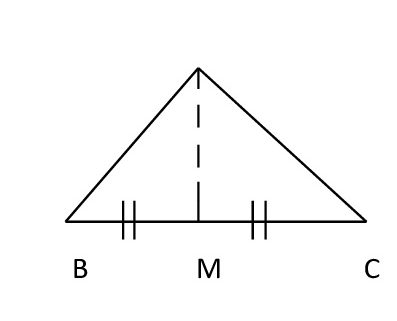EXERCISE 6.4
1) Is it possible to have a triangle with the following sides?
i) 2cm , 3cm , 5cm
Ans: 2 + 3 = 5cm
5cm = 5cm ( third side )
The sum of any two sides of the triangle is always greater than the third side hence, it is not possible to draw a triangle with sides 2cm , 3cm and 5cm.
ii) 3cm , 6cm , 7cm
Ans: 3 + 6 = 9 > 7
6 + 7 = 13 > 3
3 + 7 = 10 > 6
Since the sum of any two sides of these triangle is greater than the third side, it is possible to have a triangle with sides 3cm , 6cm and 7cm.
iii) 6cm , 3cm , 2cm
Ans: 6 + 3 = 9 > 2
3 + 2 = 5 < 6 Thus, the sum of any two side of triangle is less than the third side. Hence, it is not possible to have a triangle with side 6cm , 3cm and 2cm.
2) Take any point O in the interior of a triangle ΔPQR.

i) Is OP + OQ > PQ ?
Ans: Yes. The sum of the length of any two sides is greater than the third side.
∴ In ΔPQR , OP + OQ > PQ
ii) OQ + OR > QR ?
Ans: Yes. The sum of the length of any two sides is greater than the third side.
∴ In ΔOQR , OQ + OR > QR
iii) OR + OP > RP ?
Ans: Yes. The sum of the lengths of any two sides is greater than the third side.
∴ In ΔORP , OR + OP > RP.
3) AM is a median of a triangle ΔABC.
Is AB + BC + CA > 2 AM ?
( Consider the sides of triangles ΔABM and ΔAMC ).

Ans: The sum of the length of any two sides is always greater than the third side.
In ΔABM we have AB + BM > AM —– (1)
In ΔACM we have AC + CM > AM —— (2)
Adding the above two equations we get
AB + BM + AC + CM > AM + AM
From the figure BM + CM = BC
∴ AB + BC + AC > 2AM
Hence the given expression is true.
4) ABCD is a quadrilateral.
Is AB + BC + CD + DA > AC + BD ?

Ans: The sum of the length of any two sides is always greater than the third side.
In ΔABC AB > BC > AC —- (1)
In ΔBCD BC + CD > BD —- (2)
In ΔCDA CD + DA > AC —- (3)
In ΔDAB DA + AB > BD —– (4)
Adding (1) , (2) , (3) and (4) we get
AB + BC + BC + CD +CD + DA + DA + AB > AC + BC + AC + BD
2AB + 2BC + 2CD + 2DA > 2AC + 2BC. Taking out 2 common we get
2 ( AB + BC + CD + DA ) > 2 ( AC + BC )
Cancelling out 2 on both the sides
AB + BC + CD + DA > AC + BC.
5) ABCD is a quadrilateral. Is AB + BC + CD + DA > 2 ( AC + BD )
Ans:

Let us consider P to be a point of intersection of the diagonals. We know that sum of length of any 2 sides is greater than the third side.
In ΔPAB , PA + PB < AB — (1)
In ΔPBC , PB + PC < CD — (2)
In ΔPCD , PC + PD < CD — (3)
In ΔPDA , PD + PA < DA — (4)
Adding (1) , (2) , (3) and (4) we get
PA + PB + PB + PC + PC + PD + PA < AB + BC + CD + DA
2PA + 2PB + 2PC + 2PD < AB + BC + CD + DA
2PA + 2PC + 2PB + 2PD < AB + BC + CD + DA. Taking out 2 common we get
2 ( PA + PC ) + 2 ( PB + PD ) < AB + BC + CD + DA
From fig. : AC = PA + PC , BD = PB + PD , Hence 2AC + 2BD < AB + BC + CD + DA
2 ( AC + BD ) < AB + BC + CD + DA
∴ The given statement is true
6) The lengths of two sides of a triangle are 12 cm and 15 cm. Between what two measures should the length of the third side fall?
Ans: We know that the sum of two sides of a triangle is always greater than the third.
∴ The third side has to be less than the sum of the two sides , 12 + 15 = 27cm.
The side cannot be less than the difference of the two sides.
Thus, the third side has to be more than 15-12 = 3cm.
Hence, the length of the third side falls between 3cm and 27cm.

